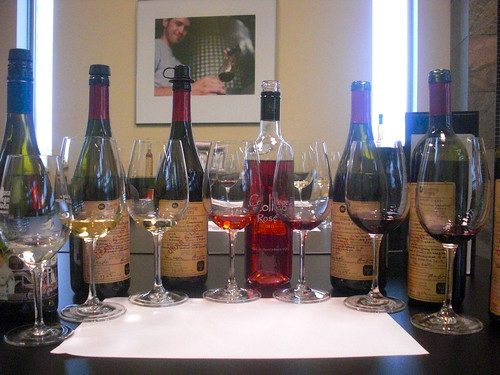
One of our region’s greatest vinous treasures and a source of endless expertise, churned out every year in the form of students, is the Niagara College Teaching Winery.
Not only do the graduates of this incredible teaching-working winery populate the wineries of Niagara and the world, but it also makes some top-quality wine for consumers to enjoy — all made by the students and staff at the college.
In 2000, the Niagara-on-the-Lake campus of Niagara College established the winery and viticulture technician program.
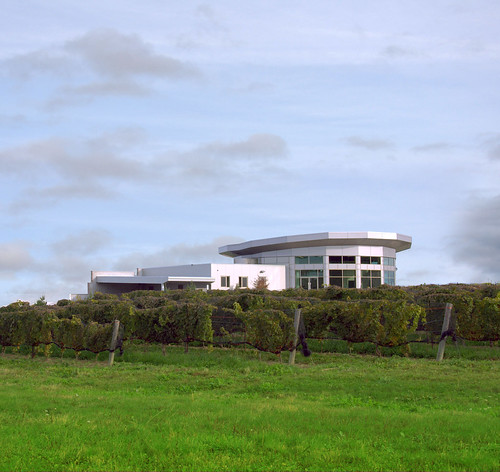

It was the first of its kind in Canada in that the teaching winery facilitates the learning enterprise of the program. The winery and hospitality/tasting room sits amid 38 acres of college vineyards. The winery allows the students to have immediate access to a hands-on experience in a real-time working environment to produce wines.
Students can obtain skills in three specialty areas; winemaking, viticulture and sales/marketing, that will provide diverse opportunities upon graduation.
The practical training students receive in that unique environment makes them desirable candidates for top jobs in the wine industry, whether it’s right here in Niagara or any other wine region in the world.
One of Canada’s top winemakers, Paul Pender, was a mature student at Niagara College’s winery and viticulture program after changing careers from carpentry.

Pender did his practical training at Tawse Winery and, well, never left, helping to build that Vineland winery into one of the most recognized and awarded names in the Canadian wine industry.
In the fall of 2008, Niagara College opened its doors to the new post-graduate certificate program in Wine Business Management.
This intense program uses college science labs, a wine sensory lab, the vineyards and on-site wine equipment. That program provides graduates with a well-rounded business education and a very specialized practical training required for successful operations of future growth in Canadian wine, hospitality and tourism industries. It is the first and only wine business program in Canada.
But at the heart of the program is the teaching winery, where a top-notch portfolio of wines is produced each vintage, primarily, but not exclusively, from estate vineyards.
The wines have proven over the years to stand with the best produced in the region under the guidance of winemaker and professor Terence Van Rooyen.
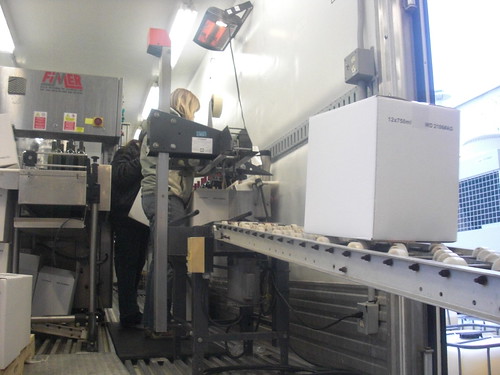
Since coming to the college in 2007, Van Rooyen has participated in several ventures with the college’s Research and Innovation Division, including a three-year project on yeast genetics done in partnership with the University of British Columbia and the University of Guelph.
Van Rooyen got his Master’s degree in Wine Science from Stellenbosch University in South Africa before working at the university’s research institute. He then worked there as an associate professor before working in the private sector for KWV and Gilbey’s Distillers and Vintners.
He also a well-known consultant for the region’s grape and wine industry.

In the fall of 2009, the Niagara College Teaching Winery moved into new facilities in Niagara College’s Wine Visitor + Education Centre (WVEC) after a grand opening attended by Prince Charles (photo above). The facility serves as a living laboratory for the College’s wine, culinary and tourism students and celebrates the Ontario and Canadian grape and wine industry through informative displays and an information centre to assist visitors in their exploration of wines and wine country.
The $3.6 million Wine Visitor + Education Centre also houses the operations of the Niagara College Teaching Winery. With a full range of production winemaking equipment and facilities, the Niagara College Teaching Winery provides students with learning opportunities that range from the grape crush to selling the finished product in the Teaching Winery’s on-site retail store. All proceeds from wine sales support student learning in Niagara College’s Winery and Viticulture Technician, Wine Business Management and Certified Sommelier programs.
Steve Gill, who manages the wine and viticulture program at Niagara College, is darn proud of the more than 1,200 grads who have gone on to become winemakers, marketers, retailers, sommeliers, viticulturists and pretty much anything to do with growing, making or selling wine.
He operates the winery to sustain the wine program with only around 5,000 cases of wine produced through a few different tiers.
“We’re trying to create our own stream of revenue to provide these kids with a proper education,” he tells me during a recent visit.
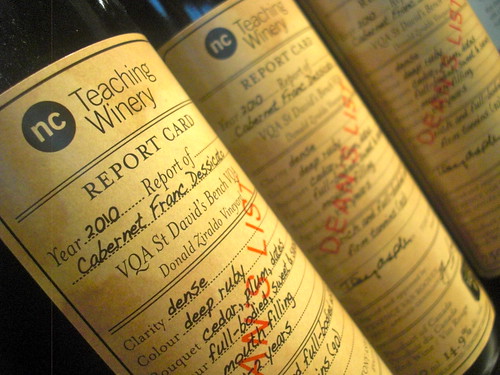
He calls it “learning in real life” and on a tour of the facility, as if to prove his point, students are busy in the gorgeous tasting room with customers tasting and learning and throughout the winery they are cleaning tanks, lifting boxes of finished wine off the bottling line and scurrying about.
Gill doesn’t want production to go much beyond the 5,000 cases now being made at the winery but is adding a sparkling component to the program this year. A new appassimento-style (made with dried grapes) wine was added to the portfolio that was released in 2012.
There are also plans for a new student-designed label program, to replace the popular “street scene” labels now being used.
The Niagara College Teaching Winery is a wonderful addition to the wine mosaic in Niagara. Not only is it key to the viability of the region, the wines being made there are not to be ignored. Here’s what to look for from recent releases:
 NC Teaching Winery Unoaked Chardonnay 2011 ($15, 88 points) — A lovely nose of tropical fruit, pear and grapefruit that highlights fresh and clean aromas. In the mouth look for passion fruit, lemon-lime and tropical notes against a background of fresh citrus acidity.
NC Teaching Winery Unoaked Chardonnay 2011 ($15, 88 points) — A lovely nose of tropical fruit, pear and grapefruit that highlights fresh and clean aromas. In the mouth look for passion fruit, lemon-lime and tropical notes against a background of fresh citrus acidity.
NC Teaching Winery Dean’s List Chardonnay 2009 and 2010 ($28, 90 points and 91 points) — The “Van Rooyen” style shines through in both the 2009 (vintage almost sold out) and 2010 oaked Chardonnays in the top Dean’s List tier. Both wines are barrel fermented and barrel matured with sur lie and batonage treatments for 11 months. The 09 is a touch leaner and racier with butterscotch ripple, spiced apple and a creamy texture. The 2010 version is more layered and opulent with poached pear, spicy apple, minerals, vanilla oak and toast and more integrated. A delicious and inviting Chardy with generous use of oak spice.
NC Teaching Winery College Rose 2011 ($12, 87 points) — I can see students of the college grabbing this right off the bottling line. It has such lovely cherry, strawberry and raspberry fruit aromas it is irresistible as a summer refresher. It’s made in a bone-dry style with a red fruit basket of flavours on the palate with just a touch of savoury notes and dried herbs. Made from 100% Cab Franc grapes.
NC Teaching College Dean’s List Pinot Noir 2009 ($28, 90 points) — Quite a savoury-earthy nose with black cherry, beet root, black currant and vanilla spice on the nose. It has good structure on the palate with bramble, currants, raspberry and vanilla flavours on a bed of supple tannins. Such a perfect match with cedar-plank salmon.
NC Teaching College Dean’s List Cabernet Franc 2009 ($28, 88 points) — Crop yield was cut way back to produce this Cab Franc from a cool vintage at the Dean’s List level. It shows raspberry and cherry fruit on the nose to go with bramble, herbs and sweet cedar spice. It’s on the leaner side on the palate with tell-tale cool-climate verve, herbs and spice intermingling with red fruits.
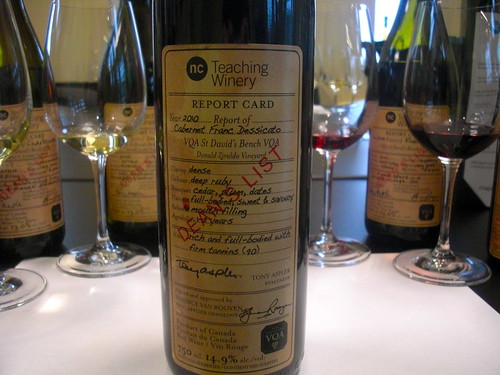
NC Teaching College Cabernet Franc Dessicato 2010 ($48, 92 points) — This is the college’s newest experimental wine that Gill is pretty excited about: “I think it’s the best wine we have made yet,” he tells me. It’s the first appassimento wine the college has made with grapes dried in a tiny room at the winery for 30 days. Only one barrel, 44 cases, was made. It’s aged in French oak for 18 months and the name “Dessicato” is made up by Van Rooyen that loosely means “desiccating on the vine.” What a beauty! Sweet maraschino cherry, cassis, raspberry, blueberry, saddle leather, cedar and a pantry full of baking spices rock the nose. It’s rich, lush and intense on the palate with a full-bodied attack of blueberry and red fruits to go with tar, licorice and sweet spices that all lead to a persistent and long finish. Wonderful stuff. Try with blue cheese crusted sirloin steak with a creamy mushroom sauce and caramelized onions.


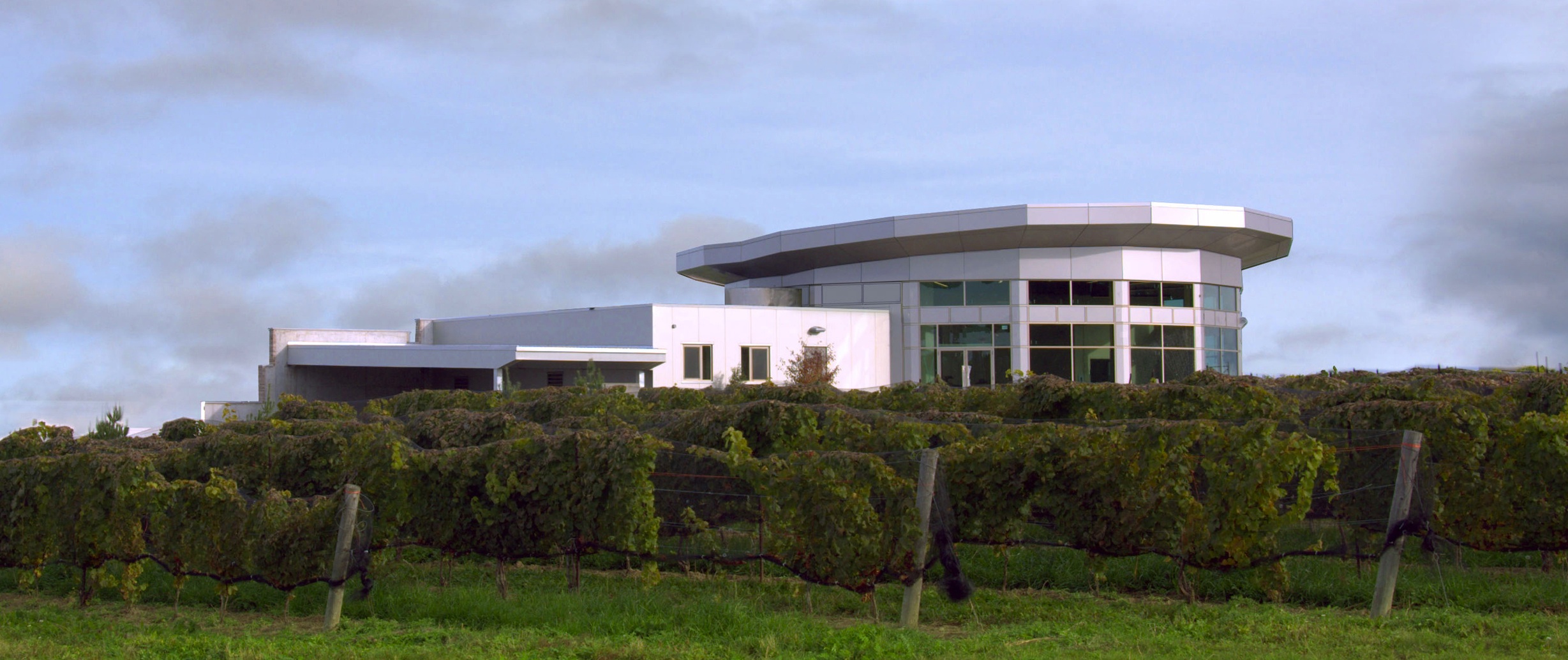



Comment here